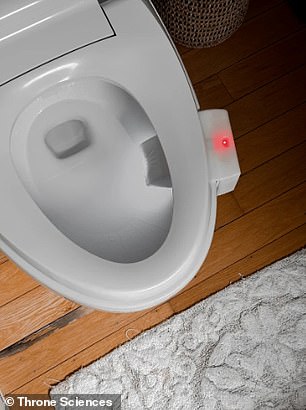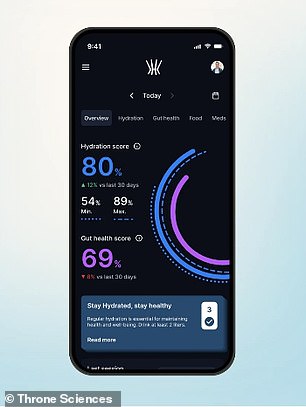Would you put a camera in your TOILET? Bizarre AI device that attaches to the bowl and analyzes the shape, size and texture of your poop for signs of disease
It’s something we all do, yet it’s often seen as a taboo subject.
Now scientists are finally lifting the lid on our bowel movements, with the launch of a new camera for your toilet.
Researchers at Throne Science have developed a bizarre device that clips onto the side of the bowl and uses AI to analyze your stool.
Fortunately, you don’t get to see the photos themselves, but instead get an overview of the shape, size and structure of your waste.
“Monitoring bowel movements can provide valuable insights into digestion and nutrient absorption, and can also serve as an early warning sign of various conditions such as gastrointestinal bleeding,” Throne Science explains on its website.
‘It’s a cost-effective, non-invasive way to monitor overall health.
‘And for people with chronic gastrointestinal diseases, it is an essential part of ongoing management.’

Researchers at Throne Science have developed a bizarre device that clips onto the side of the bowl and uses AI to analyze your stool
Throne Sciences believes that tracking your gut health “should be as normal as tracking steps.”
“There is valuable health information in our waste that almost all of us ignore,” the company explains on its website.
‘By making monitoring gut health and hydration an effortless part of the daily routine, we make these vital health indicators visible and actionable.’
The device, simply called ‘Throne’, clamps onto the side of your toilet and provides a ‘hands-off’ experience.
“Throne uses a downward-facing camera that securely captures video during every bathroom visit, which is then analyzed by advanced AI models,” Throne Sciences said.
‘These AI models are specifically trained to categorize and interpret content, providing valuable insights into your digestive and hydration status as part of your daily routine.’
An analysis of each stool is brought to you via an accompanying smartphone app, where you can explore everything from your hydration to your regularity.
If you share your toilet with housemates or family, they can all track their bowel movements.


The device has a hefty price tag. Throne will be priced at $499 when it goes on sale at the end of this year!
“Sharing your home with family or roommates does not mean you have to share your personal Throne information,” Throne Sciences explains.
‘Easily set up individual profiles in our app and thanks to Bluetooth, Throne knows exactly who is who.
‘Each user’s data is kept separately and securely, so you can easily monitor your own health without confusion.’
Privacy will likely be a key concern for many users of the AI camera – and Throne Sciences claims it holds it in the ‘highest regard’.
“We only collect data relevant to improving health, and we design every product with strict safeguards to ensure user dignity and confidentiality,” it advised.
However, the device does come with a hefty price tag.
Throne will be priced at $499 when it goes on sale at the end of this year!
